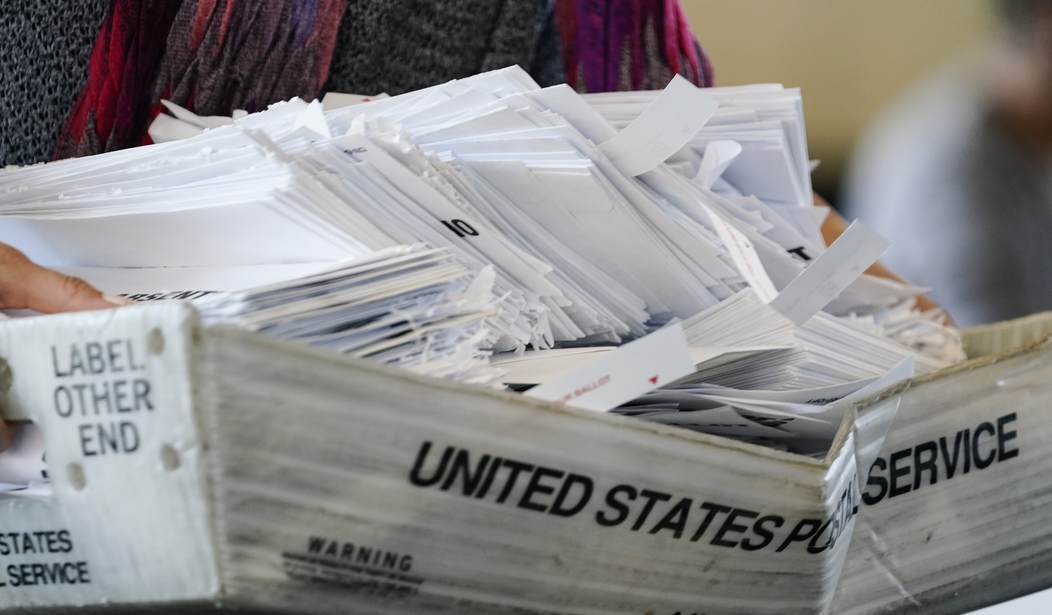I took note over at PowerlineBlog today of this piece by John Hinderaker of a study published by Dr. John Lott using statistical analysis to examine comparative voting patterns in Georgia and Pennsylvania counties.
The study is relatively dense, at over 25 pages long, and I’m going to post this article prior to accomplishing a detailed analysis of the work. I’ve embedded it below.
But the “30,000 ft view” of Dr. Lott’s conclusions — drawn from comparisons of patterns and behavior from precinct-level reporting of vote totals — is that, as a statistical matter, the EVIDENCE of vote fraud is inescapable.
Why have I emphasized “evidence”?
I did so because I want to distinguish the use of statistical data as evidence in a courtroom in an election challenge, and the use of such data as a general matter in other kinds of litigation.
In a typical election contest lawsuit brought by the losing candidate, that individual must come into Court with evidence showing the fraudulent process, and how many invalid votes were included as a result. To overturn the outcome of the election requires the challenger to prove that a specific number of invalid votes were included in the reported results, and removing those invalid votes from the vote totals would change the outcome of the contest.
As we saw played out in a number of lawsuits filed in the aftermath of the election, the Trump campaign was not able to marshall that kind of specific, ballot-level evidentiary record to invalidate a discrete set of cast ballots that would reverse the numerical result. They had significant anecdotal evidence of irregular and highly suspicious behavior, as well as some expert testimony regard insecure and vulnerable voting processes, but that expert testimony did not provide an answer to the question “Which specific ballots cast by which identified voters were invalid and why?”
And that is what the Democrats have always counted on when shoving through invalid votes by any means necessary. The vote for President is unique because of the extraordinarily compressed timeframe regarding the vote of the Electoral College, making the procedural hurdles of a meaningful election contest insurmountable.
In a case dealing with a dispute regarding just about anything other than an election contest, the type of analysis done by Dr. Lott would be admissible and compelling because it would allow Dr. Lott to offer an expert opinion in the form of something like “But for the impact of fraudulent conduct, there is no other explanation for the outcome of the voting as reflected by the pattern analysis. In the absence of fraudulent influences, barring the existence of evidence of some other contributing factor, the outcome of the election would have been different.”
That is the type of “but for” expert opinion that can support a jury’s conclusion in favor of a plaintiff making a claim. It is not direct evidence that “A” caused “B”, but it is evidence nonetheless. If convinced by such an opinion, a jury can base its verdict on such evidence.
But, as we saw played out time after time in the Court challenges, individual judges were not going to “disenfranchise” voters — and reverse election outcomes — based on anything like a “but for” opinion of an expert about how fraudulent activity was involved in the voting process, or vote-counting procedures.
What is interesting about Dr. Lott’s analysis is what he decided to focus on when making his comparisons. In examining Fulton County, Georgia, he begins with the implied premise (my conclusion) that the Fulton County election officials have corruptly engaged in some type of vote manipulation that resulted in a number of illegitimate votes for Joe Biden being included in their vote totals. Simply examining the election returns from precincts in Fulton County is not likely to reveal any obvious anomalies because all the precincts in the County are under the operational control of the same set of election officials.
What Dr. Lott did instead was to look at precinct-level voting data for those precincts on the county’s borders, and compare the data to contiguous precincts in the next county over. The borders between counties are just arbitrary lines on a map. Oftentimes they bisect one neighborhood, with streets on one side of the line in County “A” and streets on the other side of the line in County “B”. The fact that the neighborhood has portions that vote in two counties should not cause the voting patterns in those neighborhoods to vary.
Fulton County is quite oddly shaped in terms of its physical geography. It extends “North to South” quite a long ways, and shares borders with 10 other Georgia Counties.
One particular Fulton precinct shared a border with four precincts in Cherokee County, which was won by Trump roughly 70-30%.
Dr. Lott looked at the 2016 election results by those 5 precincts and found the vote totals — both absentee and in-person — all showed a less than 1% difference in voter behavior. This was true with regard to both absentee ballots and in-person voting. The residents of these five precincts all behaved in statistically identical ways regardless of whether they were in Fulton or Cherokee Counties. They proved that the demographics of the neighborhoods — even though they were bisected by the county line — produced nearly identical voting results at the precinct level.
When Dr. Lott did the same analysis for 2020, he found significantly different results comparing one county to the other. The in-person voting results were consistent with 2016, as the voting totals and results across the five precincts were nearly identical on a statistical basis. It did not matter whether the in-person vote totals were in Fulton or Cherokee Counties across the five precincts, the outcomes were the same.
But that was not true with regard to absentee ballots. In 2020, Trump did nearly 7% worse in the absentee ballot vote total in the Fulton County precinct than he did in the four Cherokee County precincts. Again, the analysis involves the same neighborhoods with no meaningful demographic differences — the only difference is the bisecting county line.
While all other comparisons between the two counties are statistically indistinguishable in 2016 and 2020, the one area where there is a significant statistical difference is the outcome of the absentee ballot count, and Trump does significantly worse in those neighborhoods in Fulton than he does in the same neighborhoods in Cherokee County.
Dr. Lott did a similar analysis in other Fulton County precincts that shared borders with precincts in other counties. All showed statistically worse performance in absentee ballot voting by Trump in the Fulton County precinct than in the precinct on the other side of the county line. The range of difference in these various comparisons was from 5.8% to 17.3%.
Dr. Lott also looked at Allegheny County in Pennsylvania, which is surrounded on all sides by counties that voted for Pres. Trump, while Allegheny County was won by Joe Biden 60-39%. Dr. Lott again focused on the precinct level voting patterns in precincts that shared county lines with precincts in the counties won by Pres. Trump.
He found a similar statistically significant reduction in Trump support between the precincts in Allegheny County and the neighboring precincts across four other county lines where the voters were in the same geographic neighborhood with matching demographics. The difference was only about 1/2 of what he found in Fulton County, but it was present in all the examined precincts.
As was the case in Georgia, the mail-in ballots were counted in a central location by a process that was controlled by the Democrat Party in a heavily one-party county. Their counting — of the same neighborhoods — turned out significantly worse for Pres. Trump than did the counting of votes from the same neighborhoods by officials in four bordering counties.
Dr. Lott’s report goes on to deal with several other issues of vote total analysis. I’m going to finish reading it at a more leisurely pace and will come back to it again with additional thoughts later.















Join the conversation as a VIP Member